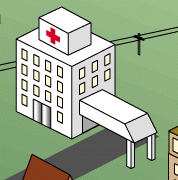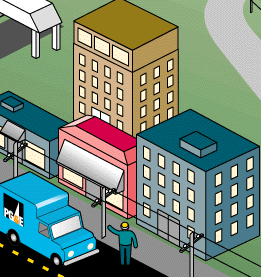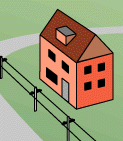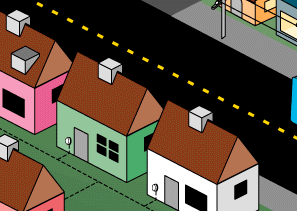Restoration Goals
Our first goal in restoring power is safety -- to the public and to our crews. This is accomplished by locating downed lines and damaged areas and making sure the power to that location is shut off. Our next goal is to restore as many customers as soon as possible, in priority order. Repair work that will restore service to essential facilities or to many customers is done before work that will restore service to only one or two customers. Frequently, we learn of outages when customers phone us to say they have lost power, or one of our crews spots and reports an outage. During storms, widespread outages can occur across the entire county almost at once and the source may be difficult to find. Once a damaged area is pinpointed, the equipment and personnel needed to make the repairs are requested from the Engineering and Operation Center. Crews are then dispatched to make the repairs, in the order of priority indicated by the numbers on this chart. Power plants are restored first so they can keep the supply of electricity flowing. Transmission lines get second priority because they serve large numbers of customers and large geographic areas. Distribution substations receive third priority because of their critical linking and switching function. If they are out of service the system not only has the equivalent of a blocked intersection, we also lose our switching ability to reroute power around damaged areas.

Public & Emergency Services

High priority goes to public service and emergency service agencies like hospitals, police, fire, water pumping stations, communication facilities, and critical service to small groups or individuals.
Neighborhoods, Businesses, & Industrial Facilities

Neighborhoods, businesses, industrial and agricultural facilities are the next priority. Our objectives are to get as many people back on as soon as possible, and to minimize economic losses to these customers.
Single & Distant Residences

The next priorities are single residences and small groups of customers on lines that extend outward from more densely networked areas. Delays in restoring these lines, which serve the fewest customers, stem from the need to concentrate our efforts where we can get the largest number of customers back on line the fastest.

Sometimes customers may see lights come back on across the street or nearby, but remain without power themselves. One reason is that not all circuits are restored at once, and different parts of a neighborhood may be on different circuits. Another might be that the restored customer's service comes directly off a primary line, which is repaired first, while the customer without power is served off a secondary line. During major storms, some customers are unfortunately in areas that are temporarily inaccessible to our crews due to floods, trees fallen across roads, or where safety is an issue. We appreciate the patience of our customers who have to wait.